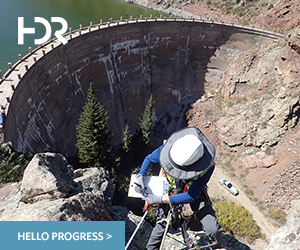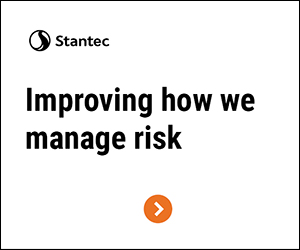 |
||||||||||||||||||||||||||
| Archive | Subscribe | ussdams.org | ||||||||||||||||||||||||||
|
USSD News
Need funding for a dam removal / fish passage project? USSD’s Dam Decommissioning Committee suggests this website that offers a “one-stop shop” of information and resources. Contact Lee Holt with any questions about the Fish Passage Portal. In addition, "Resources for the Future" provides a good overview of tailoring your specific project to conditions within federal funding programs. USSD Scholarship Awardees give glowing feedback on our Scholarship Program. Overwhelmingly the awardees comment on the valuable skills, great connections and incredible encouragement they received throughout the Award process. But we need your help! Your donations are why we have a Scholarship Program. There is no shortage of dam-related problems to solve, only a shortage of students entering the field. Together we can encourage, educate and introduce students to a fascinating career in the dam industry. Donate to USSD's Student Scholarship Award Program today!
Question: You are analyzing the long-term stability of a rockfill dam subjected to seismic loading. How would you account for the potential increase in pore pressure due to dynamic seepage during an earthquake?
a) Use a simplified pseudo-static approach with increased pore pressure coefficients
b) Perform coupled hydro-mechanical analysis incorporating dynamic wave propagation
c) Apply empirical correction factors based on dam type and seismic hazard
d) None of the above, seismic loading has minimal impact on long-term seepage
Answer: See the last item of "Industry News & Updates" below for the answer or click here.
•Question and answer supplied by ChatGPT.
Send your Just For Fun quiz question to Tonia@USSDams.org to be included in an upcoming eNews edition!
USSD Education and Events
Just a Few Seats Left! The Dam and Levee Safety industry is in the process of adopting Risk-Informed Decision Making (RIDM) as a framework for identifying and managing risks associated with dams and levees. A core component of RIDM is risk analysis workshops. In these workshops, a team of Subject Matter Experts (SMEs), aided by a Facilitator conduct a PFMA/SQRA. This course is intended for SMEs with risk analysis experience who wish to learn the role and responsibilities of a risk analysis facilitator. Half-Day Virtual Session: Sept. 9, 2024 For more information and to register, click here! Did you know USSD's Learning Center has On Demand webinars available? Browse the On Demand catalog and schedule a few to take at your convenience. Prices vary from "free" to "nominal." As always, USSD members receive discounted registration.
Expertise Needed
The National Renewable Energy Laboratory is calling for professionals in the renewable energy industry to act as mentors for the 2025 Hydropower Collegiate Competition.
Expressions of interest will be accepted until Sept. 1, 2024. The winter issue of Dams & Levees will focus on innovations in the dams and levees industry. Do you have a 1,500 to 3,000-word article you would like to share with more than 1,600 industry professionals?
Contact Tonia@USSDams.org for questions and more information. Submission deadline is Wednesday, Oct. 16, 2024. From your perspective of what has been, and what has evolved, tell us what you think will be! Write about yourself, or interview others with longevity in this industry. Approved articles will be published in the winter Dams & Levees Bulletin.
Contact Tonia@USSDams.org for questions and more information.
Submission deadline is Wednesday Oct. 16, 2024. ICOLD News
Industry News & Updates
The draft comment period for the National Levee Safety Guidelines has been extended until Aug. 31, 2024. Click here to read the guidelines "Vegetation Practices for Levees" and other supplemental information.
CISA published a supplementary ‘how-to’ guide to assist stakeholders in executing the planning approach laid out in CISA’s Infrastructure Resilience Planning Framework (IRPF). Dubbed the IRPF Playbook, this resource is intended for any critical infrastructure stakeholders involved in resilience planning. It uses a recipe-style list of inputs, processes, and fictional scenarios allowing users to better understand how best to implement the IRPF. (b) Perform coupled hydro-mechanical analysis incorporating dynamic wave propagation
Submit a Just for Fun...Quiz Question.
| ||||||||||||||||||||||||||











